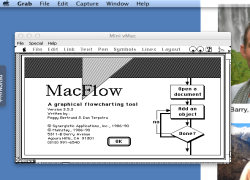
Again, only with disconnected projector on startup. I used to have the mouse cursor problem, and now I am having it again in the described setting: in those cases in which the autostart works, the mouse cursor does not hide. Sometimes it works, sometimes not, I think. If I restart with projector on, everything is fine, but this is no option. This used to be different, but I have the impression that you cannot rely completely on what VLC does when no display is attached. Even worse, the video is played somewhere in the background, not visible at all. when the computers (not accessible) start in the morning with connected beamers (HDMI) being on standby, the auto-fullscreen does not work. In fact, I used this exact method for quite a while in installations, and it worked pretty well.īut now I encountered two issues that drive me crazy:ġ. Trouble is, VLC seems to override the automatic shutdown methods, so in order to shut down properly, we need to tell VLC to stop playing and quit before shutting down/rebooting. You can usually set this up by using a simple cron command that will shut down the machine at a given time, and/or OSX’s built-in Energy Saver Schedule (under System Prefs -> Energy Saver -> Schedule… ). You may also want to have the machine automatically shut down (at night for instance), then reboot in the morning. To autolaunch on startup, go to System Preferences -> Users & Groups -> Login Items and add your app. To export as an application, choose File->Export and set the File Format to Application.
#Mini vmac autolaunch code#
If you find Mini vMac useful, please consider helping the Gryphel Project,of which it is a part.Open a new doc in AppleScript Editor, and paste in the code above. See the “ Floppy Drive” section of the Hardware Reference.Ī disk image file can be mounted by dragging its icononto the Mini vMac window.See the “ Floppy Drive”section of the Hardware Reference. If an argument begins with a double quote (‘"’), then all characters, including spaces, until the next double quote are part of the argument. If there are any arguments that don’t begin with ‘/’ or ‘-’, Mini vMac will try to mount them as disk image files. Mini vMac expects that the command line string passed to it is a list of arguments separated by spaces. See the “ Screen” section of the Hardware Reference. “-display ” or “-display ”: XOpenDisplay will be called with as the argument.

See the “ ROM” section of the Hardware Reference. “-n ”: Mini vMac will use instead of the name of the application file for things such as the title of the Mini vMac window. (See the “ ROM” and “ Floppy Drive” sections of the Hardware Reference.) “-d ”: Mini vMac will use instead of the directory containing the application when looking for things such as the ROM or disk images named disk1.dsk, disk2.dsk and so on. “-r ” or “-rom ”: Mini vMac will try to load the ROM file from. If there are any unrecognized arguments beginning with ‘-’, Mini vMac will print out copyright and usage information and quit. See the “ Floppy Drive” section of the Hardware Reference. If there are any arguments that don't begin with ‘-’, Mini vMac will try to mount them as disk image files. In the “Help” menu in Windows.ĝisplays dialog suggesting the ‘A’ command of the Mini vMac Control Mode. In the “Special” menu.ĝisplays information about the Control Mode. See the “ Power Switch” section of the Hardware Reference.
#Mini vmac autolaunch mac os#
In the “File” menu in Windows and Mac OS 9.
#Mini vmac autolaunch full#
The menu commands are so far only available in the Macintoshand Windows versions, when not in full screen mode. See the “ Interrupt Button” section of the Hardware Reference.Ĭopies to the clipboard (of the real computer, not the emulated computer) a string containing the options describing this variation of Mini vMac. See the “ Reset Button” section of the Hardware Reference. See the “ Keyboard” section of the Hardware Reference. See the “ Processor” section of the Hardware Reference. (Only in the Macintosh and Windows versions.) See the “ Floppy Drive” section of the Hardware Reference. The commands are:ĭisplays version and copyright information. Type ‘H’ in Control Mode todisplay available commands. You will remainin the Control Mode until you release the ‘control’ key.While in Control Mode, visual feedback is displayed ontop of the emulated screen.

All the functions of the emulator can be controlled withthe Mini vMac Control Mode, which works the same in theMacintosh, Windows, and Linux versions.To enter the Control Mode,press and hold down the ‘control’ key.


 0 kommentar(er)
0 kommentar(er)
